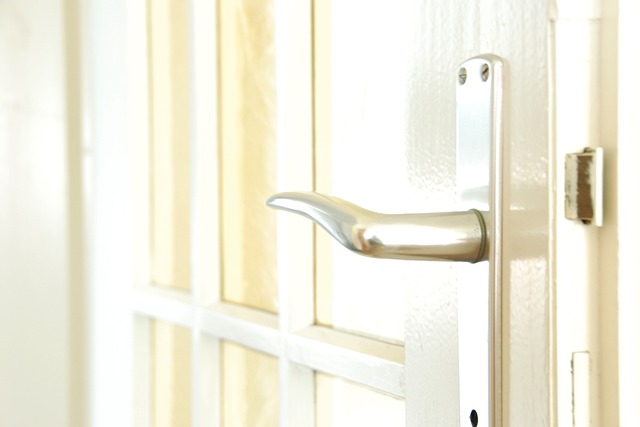In modern cities, pedestrian safety is a growing concern due to increasing traffic and crowded public spaces. Sliding automatic doors, common in commercial areas, pose potential risks unless designed with advanced sensors and anti-crush mechanisms. These technologies enable the doors to detect pedestrians and respond accordingly, enhancing security. Real-world applications show that such features protect patrons in high-traffic locations like malls, airports, and train stations by preventing accidents and providing quick responses to trapped individuals. Looking ahead, smart infrastructure incorporating sliding automatic doors with sophisticated safety systems promises to revolutionize public spaces, making them safer and more accessible for everyone.
In recent years, pedestrian safety has emerged as a critical concern in urban design. Advanced safety features, such as sensors and anti-crush mechanisms, are transforming public spaces into more secure environments. This article delves into the significance of these innovations, focusing on key areas like understanding pedestrian risks, the role of advanced sensors, preventing tragedies at sliding automatic doors, successful real-world implementations, and future protection strategies. By exploring these aspects, we uncover how technology is revolutionizing safety, especially around high-risk features like sliding automatic doors.
Understanding Pedestrian Safety: The Growing Concern
Pedestrian safety has become a growing concern in an era where cities are becoming more bustling and traffic volumes increase daily. With the rise of modern technology, automotive manufacturers are integrating advanced safety features to mitigate risks and protect vulnerable road users, especially pedestrians. One significant area of focus is the design and functionality of sliding automatic doors, which play a crucial role in pedestrian safety, particularly in urban settings.
These doors, often found in commercial spaces, shopping malls, and modern transportation hubs, present unique challenges for both designers and pedestrians alike. As they slide open and closed seamlessly, it’s essential to ensure they do not pose risks to passersby. Advanced sensors and anti-crush mechanisms are being incorporated into these doors to detect and respond to the presence of pedestrians, ensuring a safe passage experience. By understanding the dynamics of pedestrian interaction with sliding automatic doors, manufacturers can create more secure environments, fostering a harmonious relationship between technology and human safety.
Advanced Sensors: The New Guardians of Public Spaces
Advanced Sensors are transforming public spaces into safer havens for pedestrians, acting as vigilant guardians that detect and respond to potential hazards in real-time. These sensors, integrated into modern structures like sliding automatic doors, employ a combination of technologies such as LiDAR, cameras, and radar to navigate their surroundings. They continuously monitor pedestrian movement, identifying individuals at risk of collision and triggering protective measures instantly.
This proactive approach enhances safety by reducing the reaction time gap between detecting a hazard and taking corrective action. For instance, sliding automatic doors equipped with advanced sensors can automatically pause or reverse their motion upon sensing an approaching pedestrian, ensuring smooth movements without compromising safety. Such innovations not only safeguard individuals but also contribute to creating more inclusive public spaces that cater to diverse needs and foster a sense of security for all users.
Anti-Crush Technology: Preventing Tragedies at Sliding Automatic Doors
Anti-crush technology is a vital safety feature, especially in urban areas where pedestrian footfall is high. Sliding automatic doors, while convenient and aesthetically pleasing, pose a potential hazard if not equipped with robust safety mechanisms. These innovative systems are designed to prevent tragedies by quickly detecting and responding to any obstacles or individuals trapped between the door panels.
By employing advanced sensors and actuators, anti-crush technology can halt the door’s movement in real time, preventing injuries or even fatalities. This is particularly crucial in busy shopping centers, train stations, and other public spaces where sliding automatic doors are commonly used. The technology ensures that the doors remain stationary until the clearance of any potential obstructions, offering a safer environment for both patrons and staff.
Real-World Applications: Successful Implementation Stories
In real-world applications, advanced safety features like safety sensors and anti-crush mechanisms have proven invaluable in protecting pedestrians across various settings. For instance, sliding automatic doors, equipped with sensitive sensors, can detect the presence of individuals or objects in their path, pausing or reversing their movement to prevent accidents. This technology has been successfully implemented in high-traffic areas such as shopping malls, airports, and train stations, where congestion and hurried foot traffic pose significant risks.
Moreover, these automatic doors often incorporate anti-crush mechanisms that use powerful sensors and hydraulic systems to ensure no one is trapped or injured during the door’s operation. Such features not only enhance safety but also contribute to a smoother flow of pedestrians, fostering environments that are both secure and accessible for all.
The Future of Pedestrian Protection: Innovations on the Horizon
The future of pedestrian protection is looking increasingly innovative, with advancements in technology set to transform the way we think about safety on our roads and sidewalks. One prominent development is the integration of sophisticated sensors and anti-crush mechanisms designed to safeguard pedestrians from potential harm. These cutting-edge systems not only detect the presence of individuals but also analyze their movement patterns, enabling vehicles to respond swiftly and safely.
Furthermore, as we look ahead, smart infrastructure like sliding automatic doors could become more prevalent, offering enhanced protection in public spaces. These automated features not only provide convenience but also serve as a critical layer of defense against accidents, especially in high-traffic areas. With ongoing research and development, the horizon promises exciting solutions that will make our urban environments safer for everyone.
Advanced safety features, including sophisticated sensors and anti-crush mechanisms, are transforming public spaces into safer environments for pedestrians. These innovations, such as improved sliding automatic doors, not only address growing concerns but also demonstrate a commitment to preventing tragedies. As we look towards the future, ongoing research and development promise even more robust solutions, ensuring that our urban landscapes remain vibrant and secure for everyone.
